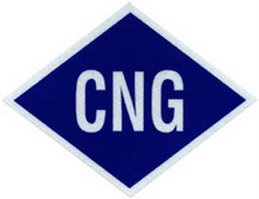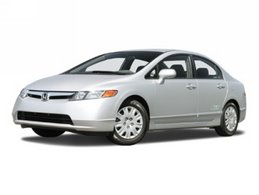By PAUL FOY, AP Business WriterFri Apr 25, 3:06 AM ET
Troy Anderson was at the gas pump and couldn't have been happier, filling up at a rate of $5 per tank.
Anderson was paying 63.8 cents per gallon equivalent for compressed natural gas, making Utah a hot market for vehicles that run on the fuel.
It's the country's cheapest rate for compressed gas, according to the Natural Gas Vehicle Coalition, and far less than the $3.56 national average price for a gallon of gasoline.
"I'm totally celebrating," crowed Anderson, a 44-year-old social worker, who picked up a used Honda Civic GX two months ago. "This is the greatest thing. I can't believe more people aren't talking about it. This is practically free."
Personal ownership of natural gas-fueled vehicles in Utah soared from practically nothing a few years ago to an estimated 5,000 vehicles today, overwhelming a growing refueling network, where compressors sometimes can't maintain enough pressure to fill tanks completely for every customer.
"Nobody expected this kind of growth. We got caught by the demand," said Gordon Larsen, a supervisor at Utah utility Questar Gas.
Utah has 91 stations, including 20 open to the public, mostly in the Salt Lake City area. The others are reserved for commercial drivers, such as school districts, bus fleets and big businesses such as a Coca-Cola distributor.
It's possible to drive the interstates between Rock Springs, Wyo., and St. George, Utah — a distance of 477 miles — and find 22 places to pull off and fill up.
California has more stations but prices are much higher there, the equivalent of $2.50 a gallon for gasoline.
"Utah has the cheapest prices by a big margin," said Richard Kolodziej, president of the Natural Gas Vehicle Coalition, whose members include utilities, Honda Motor Co., environmental groups and transit agencies.
Among major utilities outside of Alaska, Questar is the country's cheapest provider of natural gas for home use. It can offer compressed natural gas for cars even cheaper because of a federal tax credit.
The incentives don't stop there. Buyers of new and some used and converted vehicles can claim their own federal and state tax credits totaling up to $7,000 — nearly the extra cost of a CNG-fueled vehicle.
Utah Gov. Jon Huntsman, a Republican, paid $12,000 of his own money to modify a state-owned Chevrolet Suburban last June.
"Converting to CNG gives us an opportunity to promote energy security and support a clean-burning alternative," Huntsman said in an e-mail Thursday. "Plus, who can beat running a Suburban on 63 cents a gallon?"
Mike Gaffa, a 39-year-old Continental Airlines reservation clerk, bought a used Ford F-150 pickup for $10,500. The vehicle came with a bonus: a previous owner added three extra tanks that fill the bed of his pickup.
"I don't even keep track of gasoline prices anymore," Gaffa boasted. "You'd be hard-pressed to find another vehicle that can go 600 miles on a fill-up."
And when he runs out of natural gas, he can switch over to a regular gasoline tank for a total range of more than 850 miles.
Utah has caught the attention of Honda, which can't make CNG-equipped Civic GXs fast enough at an Ohio plant. For now, it makes the compact available for sale to individuals only in California and New York, but executives say Utah could be next on their list.
Aside from fleet sales, no other automaker offers a CNG-powered car in the U.S.
Most Utah buyers must turn to the used-car market. They are tracking down vehicles on the Internet, some made earlier by the Detroit automakers. Some dealers here are hauling used CNG vehicles to Utah by the truckload.
"The demand in Utah is huge," Kolodziej said. "It's sucking all the used vehicles from around the country."
Copyright © 2008 The Associated Press. All rights reserved. The information contained in the AP News report may not be published, broadcast, rewritten or redistributed without the prior written authority of The Associated Press.


